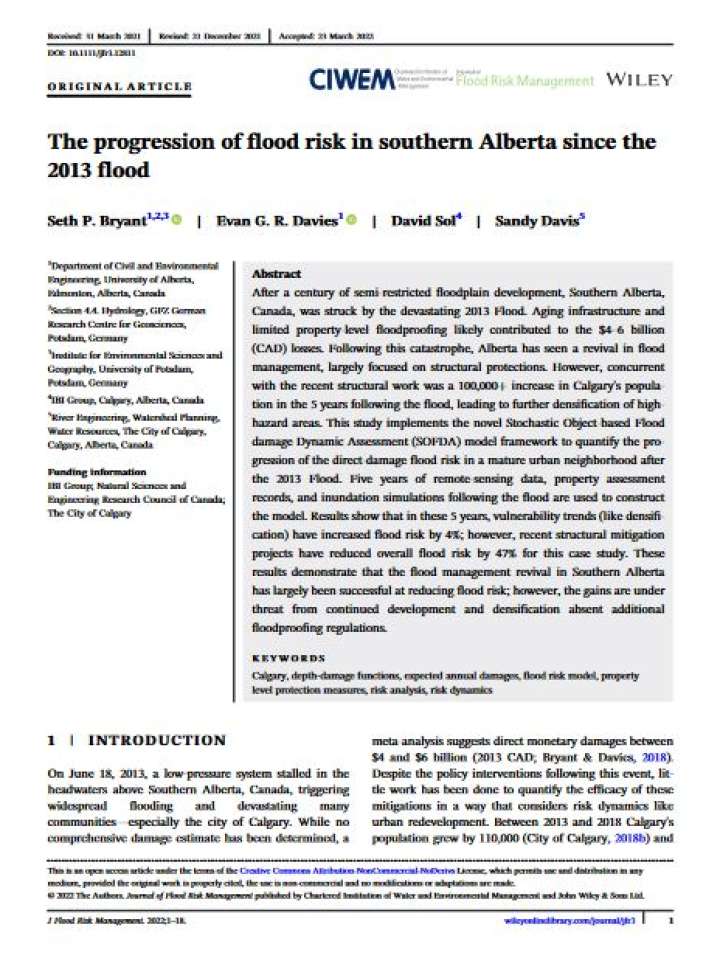The progression of flood risk in southern Alberta since the 2013 flood
This study implements the novel Stochastic Object-based Flood damage Dynamic Assessment (SOFDA) model framework to quantify the progression of the direct-damage flood risk in a mature urban neighborhood after the 2013 Alberta flood. Five years of remote-sensing data, property assessment records, and inundation simulations following the flood are used to construct the model. Results show that in these 5 years, vulnerability trends (like densification) have increased flood risk by 4%; however, recent structural mitigation projects have reduced overall flood risk by 47% for this case study.
These results demonstrate that the flood management revival in Southern Alberta has largely been successful at reducing flood risk; however, the gains are under threat from continued development and densification absent additional floodproofing regulations. After a century of semi-restricted floodplain development, Southern Alberta, Canada, was struck by the devastating 2013 Flood. Aging infrastructure and limited property-level floodproofing likely contributed to the $4–6 billion (CAD) losses. Following this catastrophe, Alberta has seen a revival in flood management, largely focused on structural protections. However, concurrent with the recent structural work was a 100,000+ increase in Calgary's population in the 5 years following the flood, leading to further densification of high-hazard areas.
Explore further
